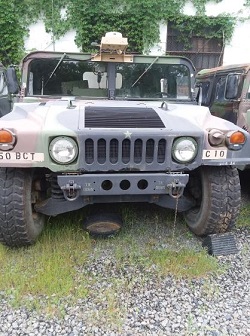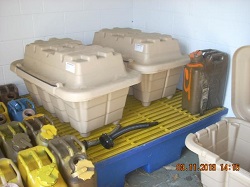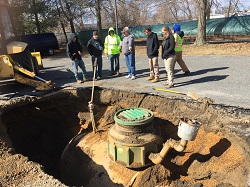Alert: DMAVA offices are closed Wednesday, 3/7/18, due to inclement weather conditions.
(Close Alert)
Pollution Prevention
On This Page:
Introduction
~Reduce Or Eliminate Pollution and Hazardous Waste~
In accordance with the Pollution Protection Act (PPA) of 1990 and NJARNG Pollution Prevention (P2), NJARNG has worked to minimize materials used and total waste generated. The three P2 strategies ARNG sites focus on for success in pollution prevention are; Reduction, Recycling and Affirmative Procurement. These strategies are major combative techniques to prevent pollution.
Superabundant solid or hazardous waste is controlled by substituting, modifying or changing the processes in place. Before waste is discarded, further separation of materials allows the reuse of raw materials when manufacturing new products.
By complying with PPA and P2 standards, NJARNG sites ensure a clean and safe environment for the surrounding community and their staff members while also reducing future liability for waste disposal. Success of PPA and P2 compliance is measured by analyzing the inputs, processes and waste streams from each NJARNG site.
Below are some examples of ways in which NJARNG sites work to combat pollution.
Ozone Depleting Chemical Survey
Under the Montreal Protocol of 1987, ozone depleting chemicals (ODCs) began to be gradually phased out of use in an agreement made by 197 countries around the world. ODCs are broken down into two main classes, Class I and Class II.
Class I ODCs are chlorofluorocarbons (CFCs) and under the clean air act, were set to be phased out by 2005. Class II ODCs or hydrochlorofluorocarbons (HCFCs) are in the process of being phased out and will be 99.5% phased out by 2020.
Surveys were conducted at all NJARNG facilities to locate equipment containing Class I and II ODC’s, such as air conditioners, ice machines, refrigerators, and drinking water fountains. Survey data was collected by NJDMAVA staff members and recommendations for removal were filed in a report to be finalized by June 2018.
Spill Plans
Spill Plans are put in place in order to prevent, control or counter spills in the event of a spill of oil or hazardous waste. Each site is responsible for following three plans, the RCRA Contingency Plan, the Facility Response Plan and the Spill Prevention Control and Countermeasure Plan.
The RCRA contingency plan warrants certain hazardous waste generators are required to develop and maintain procedures for responding to spills of hazardous waste.
The facility response plan applies to facilities and activities that store or use oil and/or hazardous substances. These facilities are required to implement a plan of action where oil and hazardous substances are used.
Lastly, the spill prevention control and countermeasure Plan (SPCCP) ensures that appropriate tools are available on sites where significant amounts of oil or toxic/ hazardous materials are located.
Hazmat Control
The NJARNG has implemented the Hazardous Material Management Program (HMMP) which is designed to reduce and eliminate hazardous materials from guard sites. These processes are accomplished by following the target cycle of procurement, storage, handling, use and final disposition.
An example of this is secondary storage containment such as double linings within a container.
Underground Storage Tank (UST) Removal
All UST’s at NJARNG facilities are being removed and replaced with Above Ground Storage Tanks (AST’s).
UST’s are difficult to monitor for leaks, which could lead to soil and groundwater contamination. AST’s are inspected regularly, and have a secondary containment system in place to prevent any leaking fuel from entering the soil or groundwater.


